Christ the Redeemer statue artistic features. Where is the statue of Christ the Savior located?
The Statue of Christ the Redeemer (port. Cristo Redentor) is the famous statue of Christ with outstretched arms on the top of Mount Corcovado in Rio de Janeiro. It is a symbol of Rio de Janeiro and Brazil in general. The statue of Christ the Redeemer can rightfully be considered one of the most majestic buildings of mankind. Its size and beauty, combined with the panorama opening from the observation deck at the foot of the statue, will take the breath away of anyone who happens to be there.
It stands on top of the Corcovado hill at an altitude of 704 meters above sea level. The height of the statue itself is 30 meters, not counting the seven-meter pedestal, and its weight is 1140 tons. The idea for this structure originated in 1922, when the centenary of Brazilian independence was celebrated. A well-known weekly magazine then announced a competition of projects for the best monument - a symbol of the nation. The winner, Hector da Silva Costa, came up with the idea of a sculpture of Christ with his arms outstretched and embracing the entire city.

This gesture expresses compassion and at the same time joyful pride. Da Silva's idea was received with enthusiasm by the public also because it crossed out the previous plan to erect a grandiose monument to Christopher Columbus on Mount Pan de Azucar. The church immediately got involved, organizing a fundraiser across the country to finance the project.
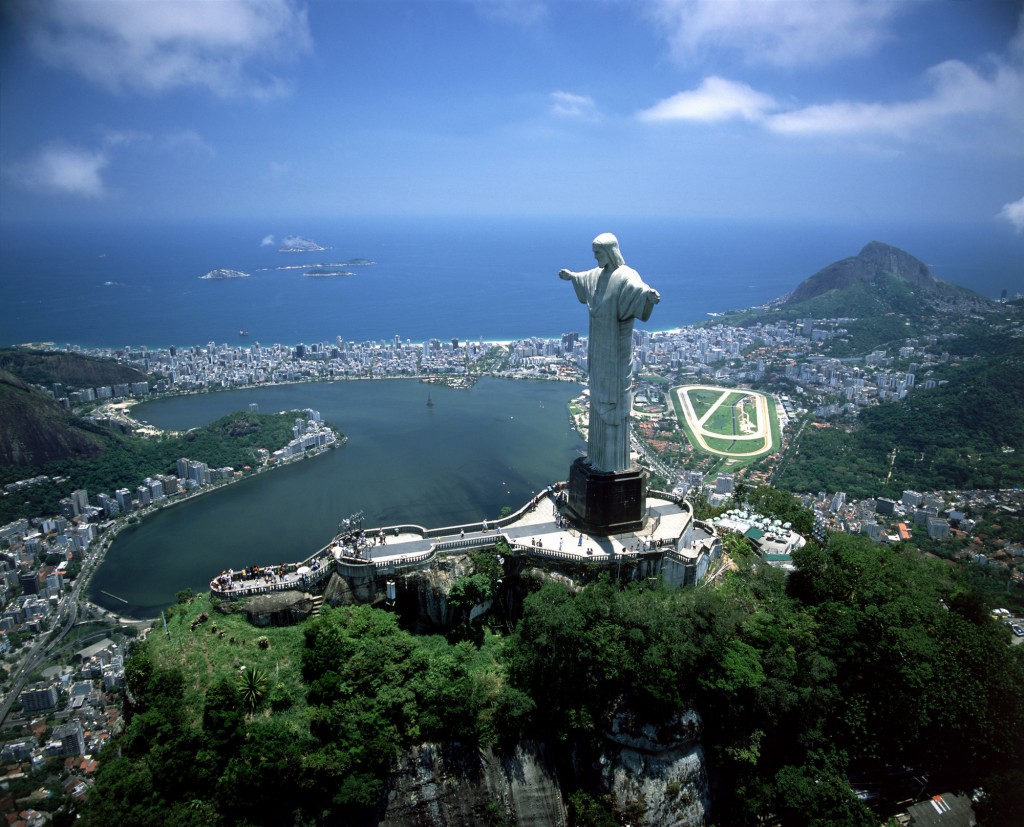
An interesting detail: due to technological imperfections, it was not possible to create such a statue in Brazil at that time. Therefore, it was manufactured in France, and then transported in parts to the site of future installation. First by water to Brazil, then by miniature railway to the top of Mount Corcovado. In total, construction cost the equivalent of 250 thousand US dollars at that time.


Before work began, architects, engineers and sculptors met in Paris to discuss all the technical problems of installing the statue on a hilltop, where it was exposed to all winds and other meteorological influences. Work on the design and creation of the statue took place in Paris. She was then taken to Rio de Janeiro and installed on Corcovado hill. On October 12, 1931, its first grand opening and consecration took place; by this day, the lighting installation was also installed.

In 1965, Pope Paul VI repeated the consecration ceremony, and the lighting installation was also updated for the occasion. Another great celebration took place here in the presence of Pope John Paul II on October 12, 1981, when the fiftieth anniversary of the statue itself was celebrated.

The statue of Christ the Savior is considered one of modern miracles Sveta. The height of the stone monument is 30 meters, not counting the seven-meter pedestal; the head of the statue weighs 35.6 tons; the hands weigh 9.1 tons each, and the arm span is 23 meters. Built in 1885, the tram line now leads almost to the top of the hill: the final stop is just forty meters below the statue. From there you need to climb 220 steps of a staircase to the pedestal on which the observation deck is located.
In 2003, an escalator was opened that takes you to the foot of the famous statue. From here you can clearly see the beaches of Copacabana and Ipanema stretching on your right hand, and on your left the giant bowl of the Maracana, the world's largest stadium, and international Airport. From the sea side rises the unique silhouette of Mount Pan di Azucar. The statue of Christ the Redeemer is a national treasure and a national Brazilian shrine.


The statue of Christ the Savior is made of reinforced concrete and soapstone, and weighs 635 tons. Due to its size and location, the statue is clearly visible from a fairly large distance. And in certain lighting, it looks truly divine.

But even more impressive is the view of Rio de Janeiro from the observation deck located at the foot of the statue. You can get to it by the highway, and then by steps and escalators.
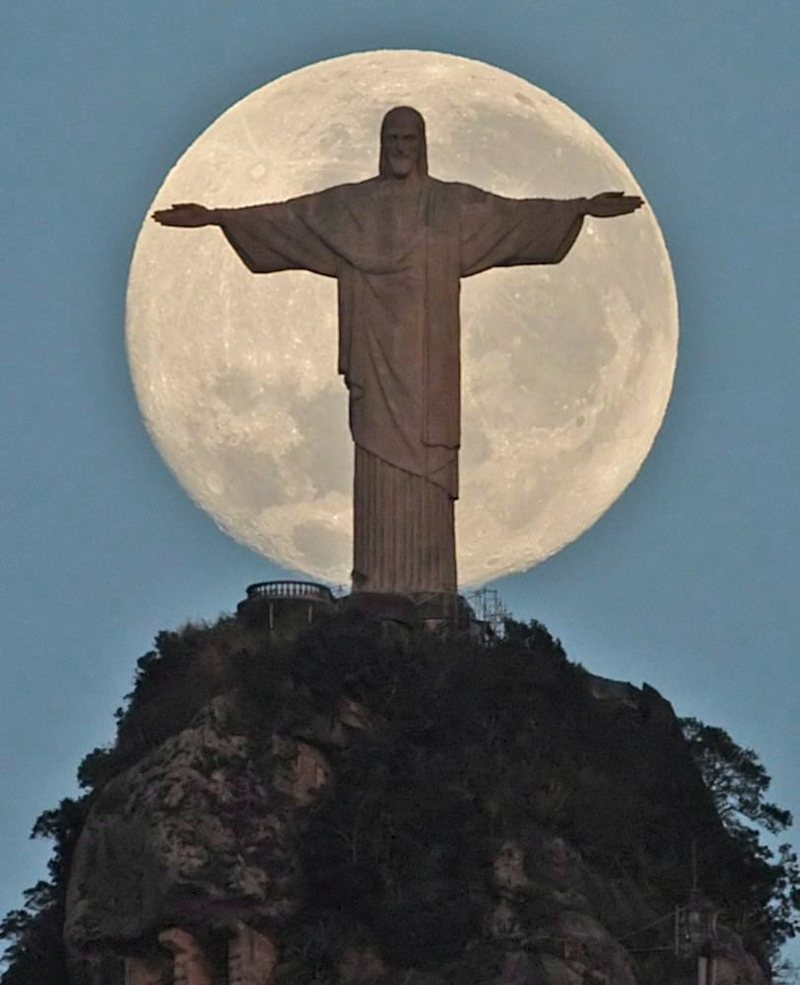
Twice, in 1980 and 1990, major repairs were carried out on the statue. Also, preventative work was carried out several times. In 2008, the statue was struck by lightning and damaged slightly. Work to restore the outer layer on the fingers and head of the statue, as well as install new lightning rods, began in 2010.
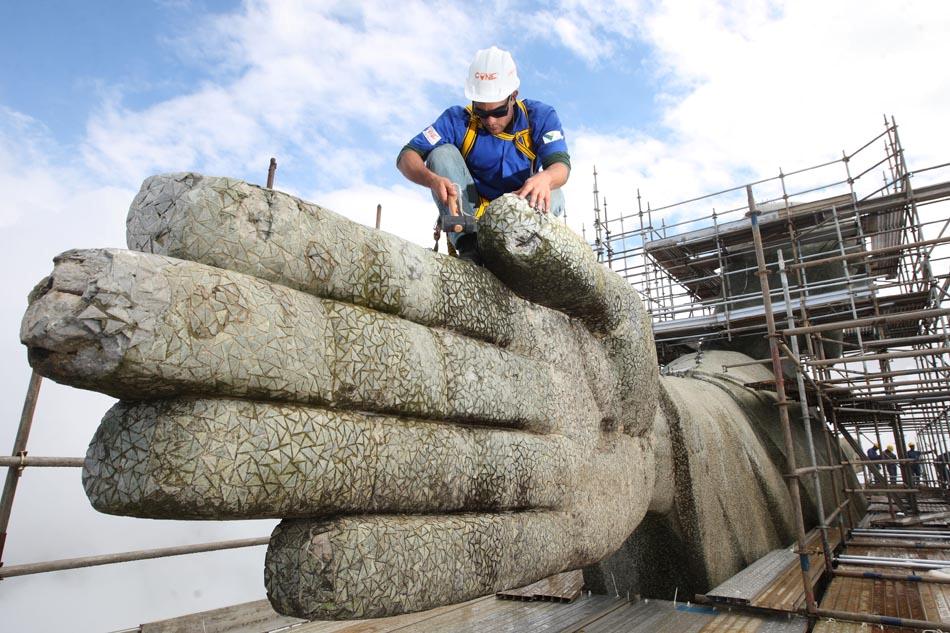
It was then that the statue of Christ the Savior was subjected to the first and only act of vandalism in its entire history. Someone climbed onto the scaffolding and painted pictures and inscriptions on the face of Christ.
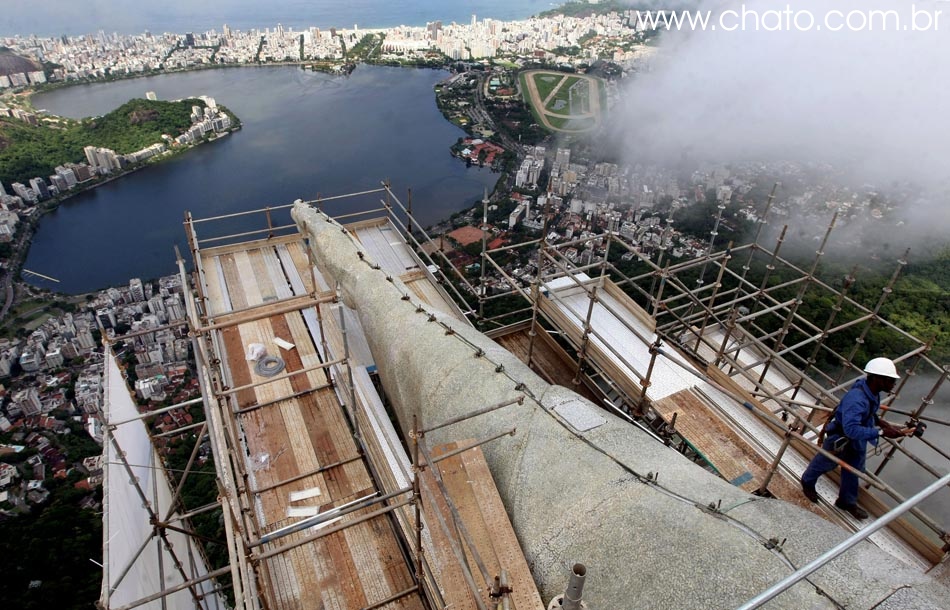
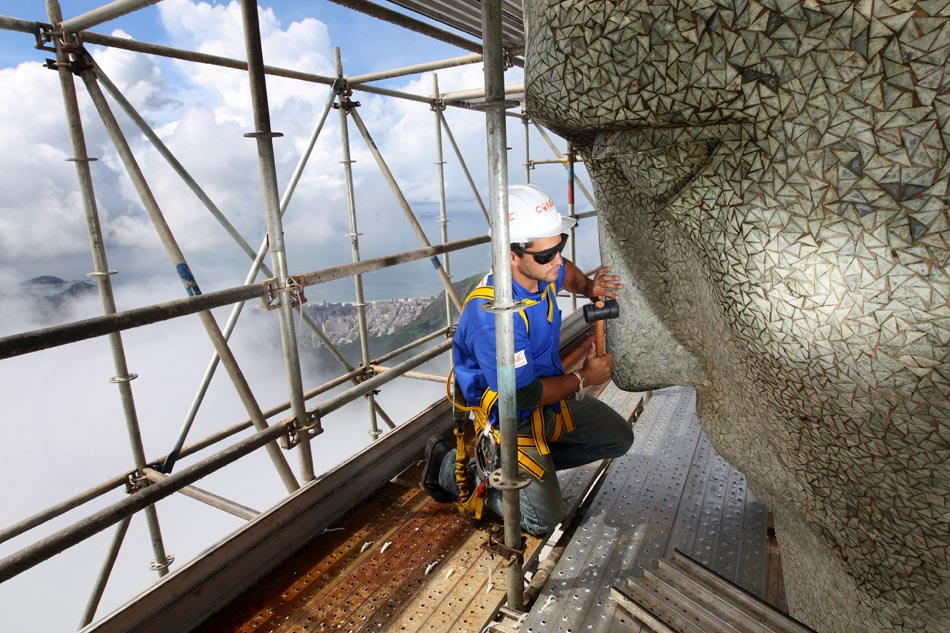


Every year, about 1.8 million tourists will climb to the foot of the monument. Therefore, when the new seven wonders of the world were named in 2007, the statue of Christ the Savior was included in their list.
![]()
Christ spread his arms over the huge city, as if blessing the millions of people living in it. Far below are houses, streets with colorful spots of cars, a long yellow strip stretching along the bay, and on the other side, bordered by green palm trees, is the famous multi-kilometer Copacabana beach. On the other hand of Christ you can see the no less famous bowl of the Maracana stadium", which was glorified by the Brazilian football wizards, five-time world champions, the international airport, and beyond the surface of the bay, on the other side, silhouettes of distant mountains are visible in the haze of fog.
Here, standing at the feet of Christ, you understand how amazing a nice place chosen by the Portuguese conquistadors who foundedXVIcentury on the shores of Guanabara Bay fort, which very quickly became the city of Rio de Janeiro and the capital of the Viceroyalty of Brazil, one of the colonies of Portugal.
Only in 1822 did Brazil become an independent state, called first the Brazilian Empire, and from 1889 the Republic of Brazil. The capital of the state is Rio de Janeiro continued to be until 1960, when it lost this honor to the new city of Brasilia, but remained one of the most beautiful cities on Earth. No wonder the Brazilians themselves say about him this way: “God created the world in six days, and on the seventh he created Rio de Janeiro».
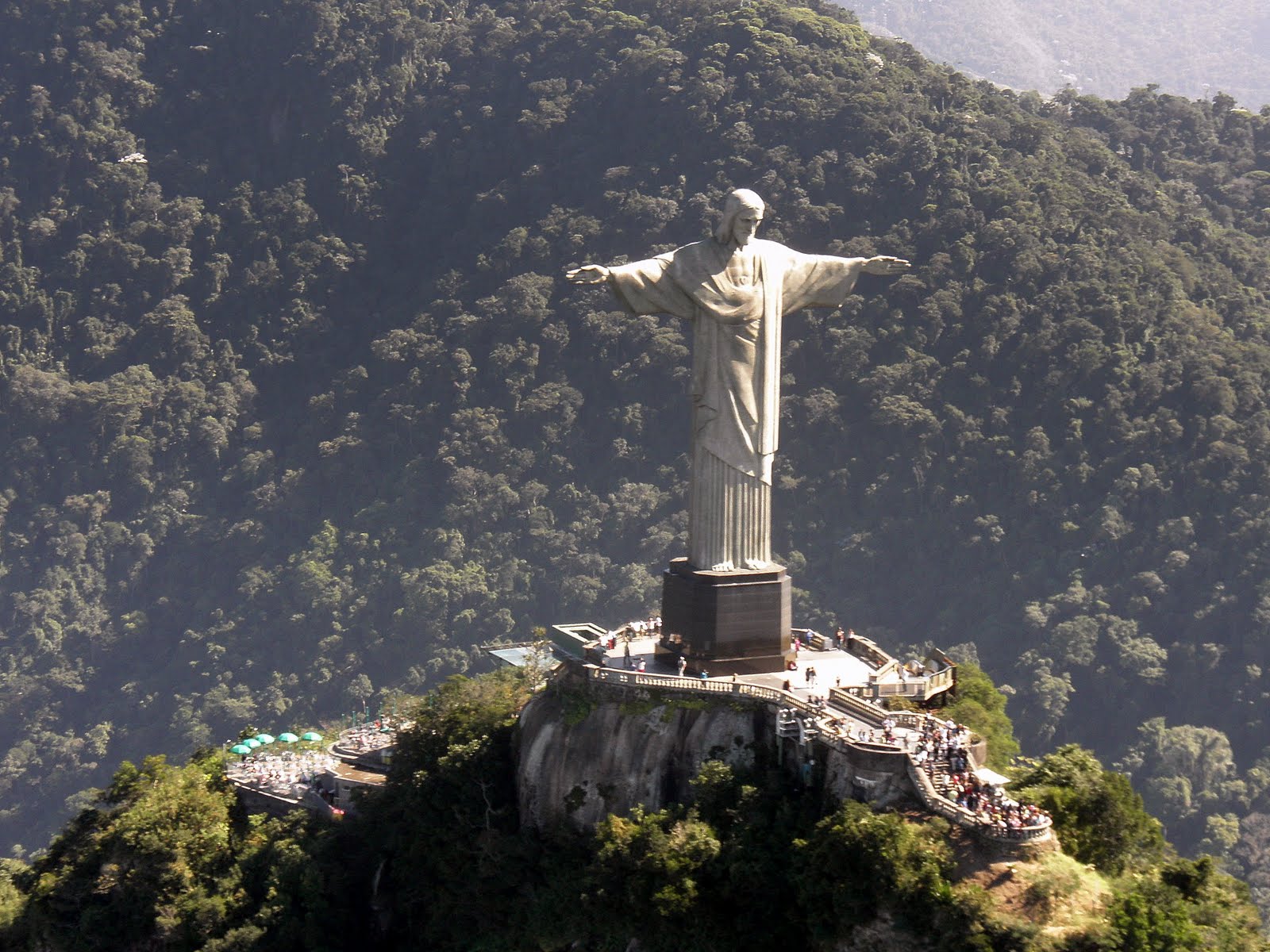
To be fair, it must be said that there are other similar majestic statues of Christ on Earth. In Italy, a huge stone Savior rises above the city of Maratea. IN Dominican Republic, on the island of Haiti - above the city Puerto Plata. But in Rio de Janeiro he is the most majestic and stands tallest...


![]()
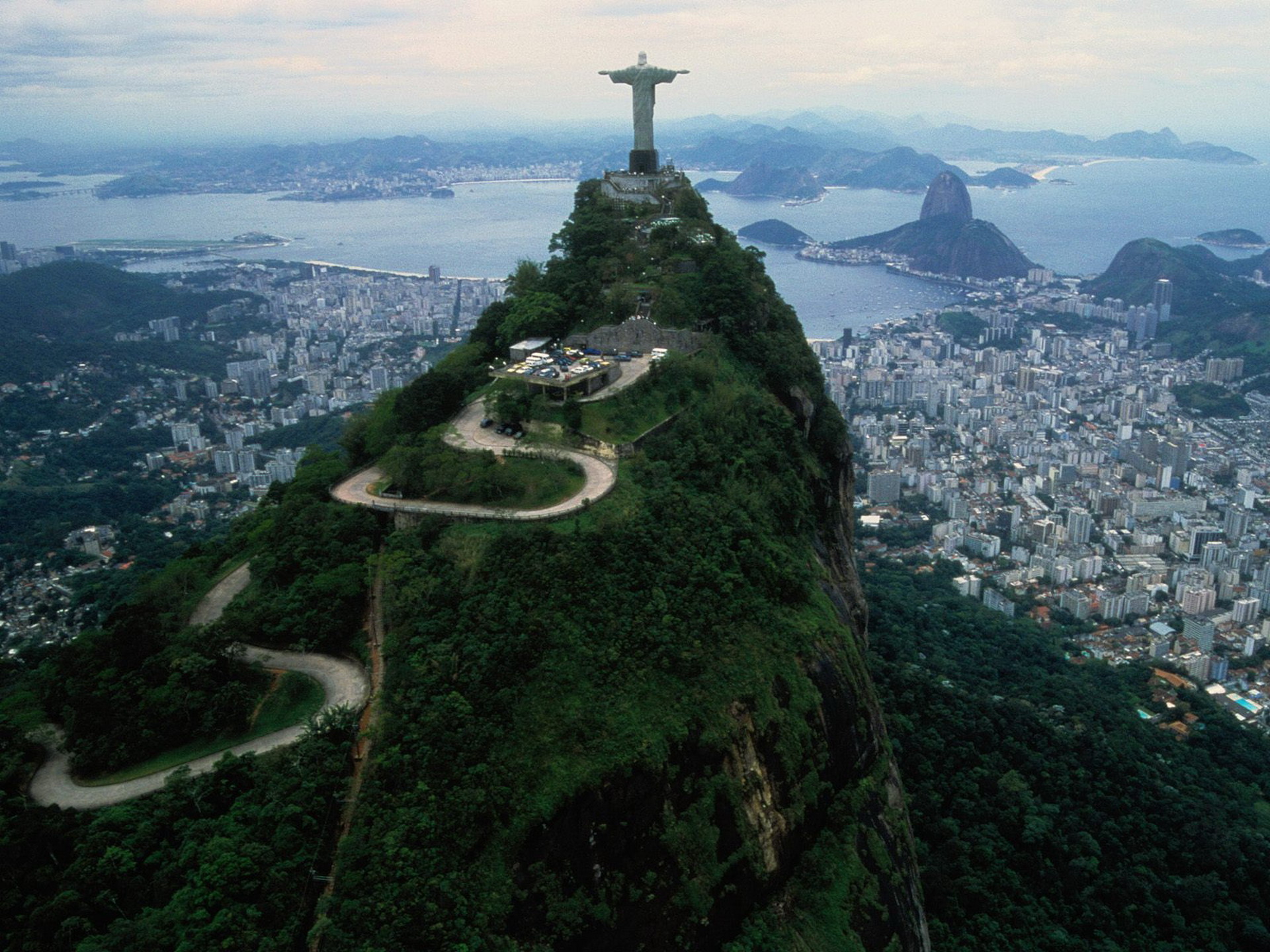

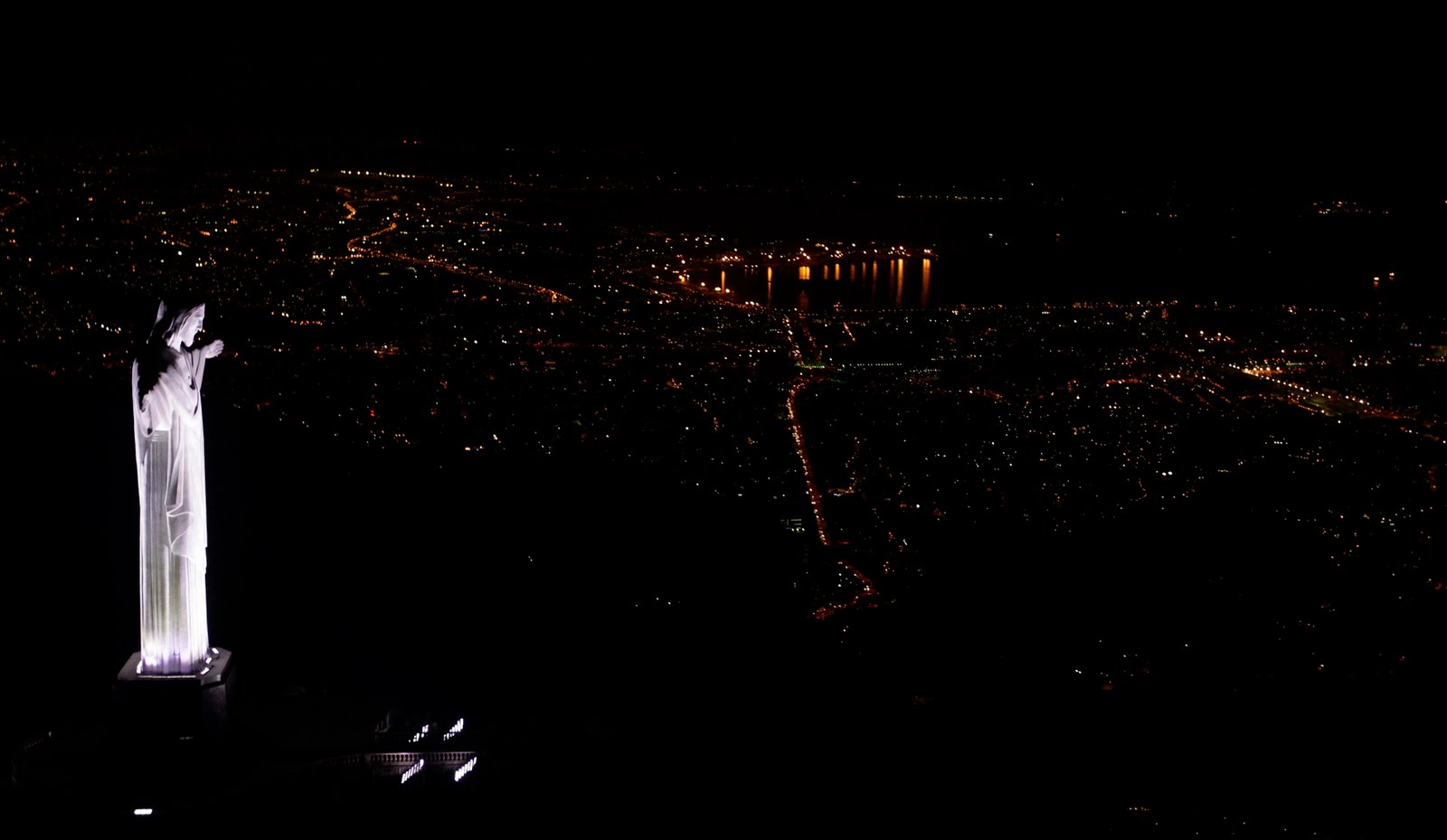
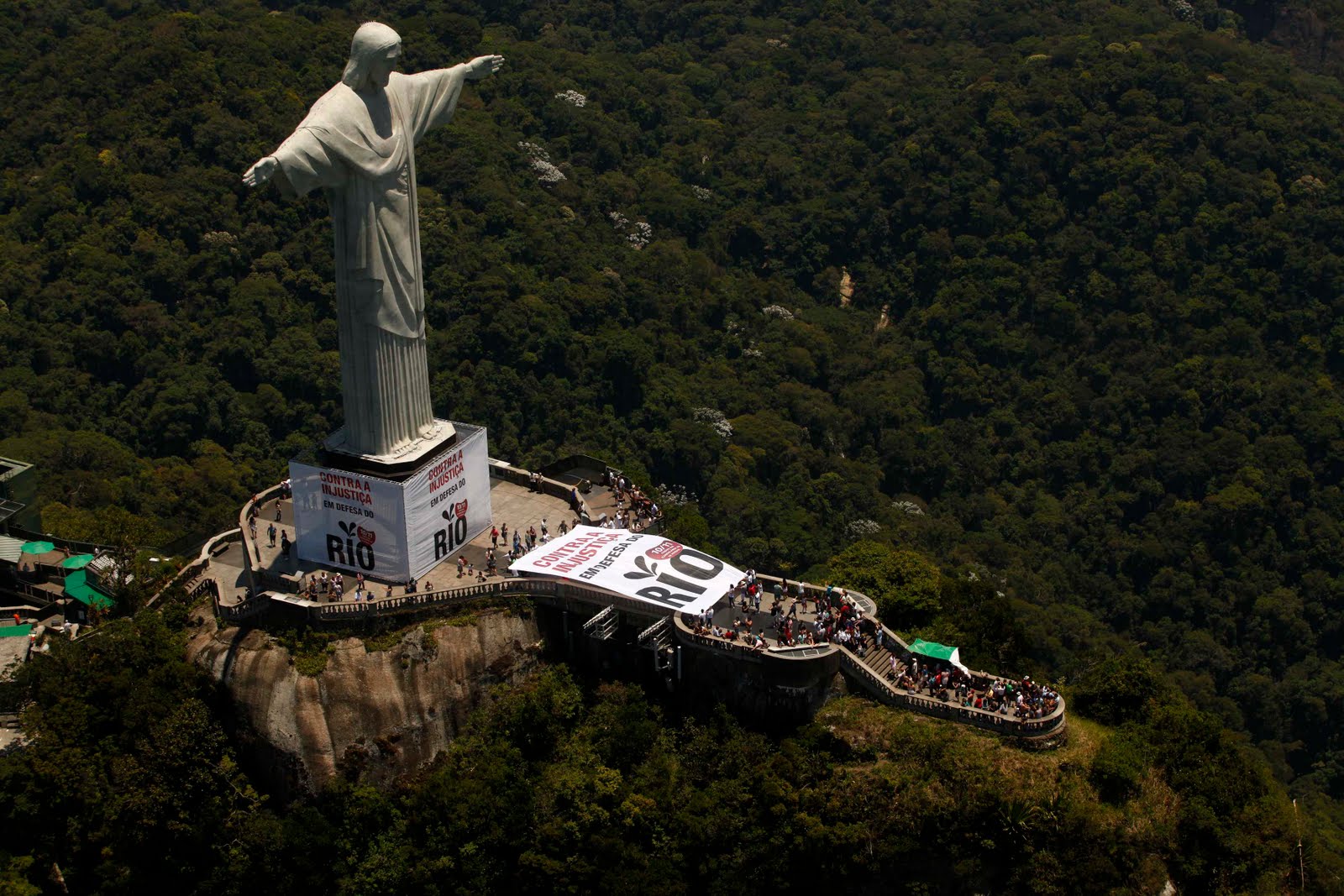

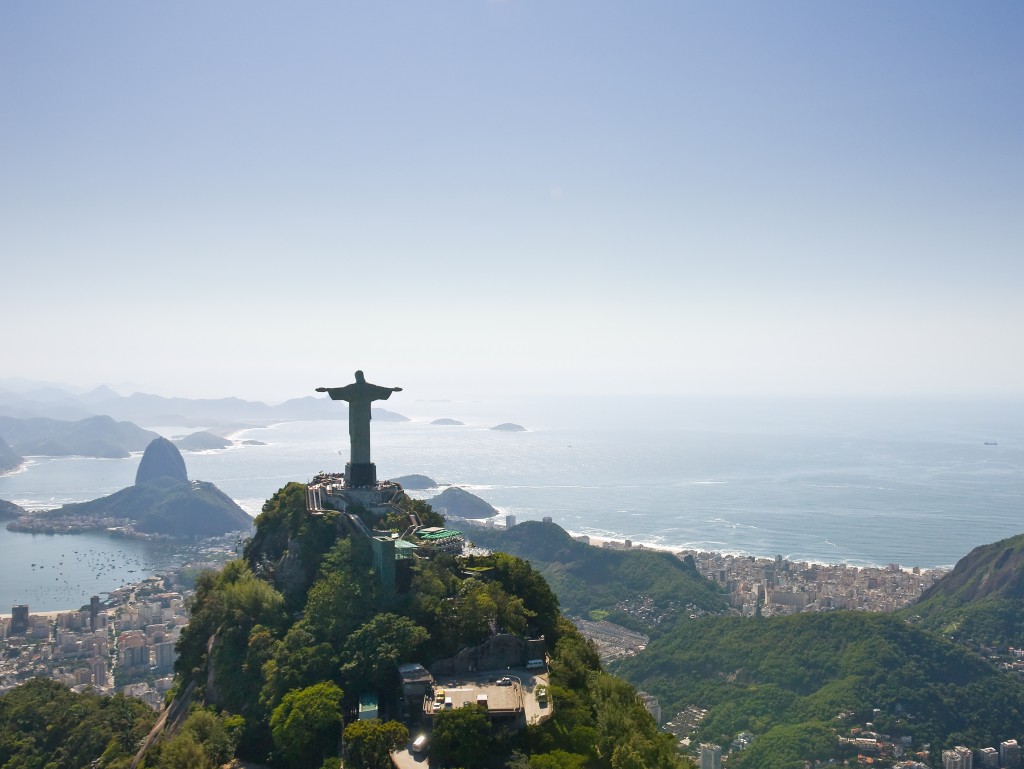

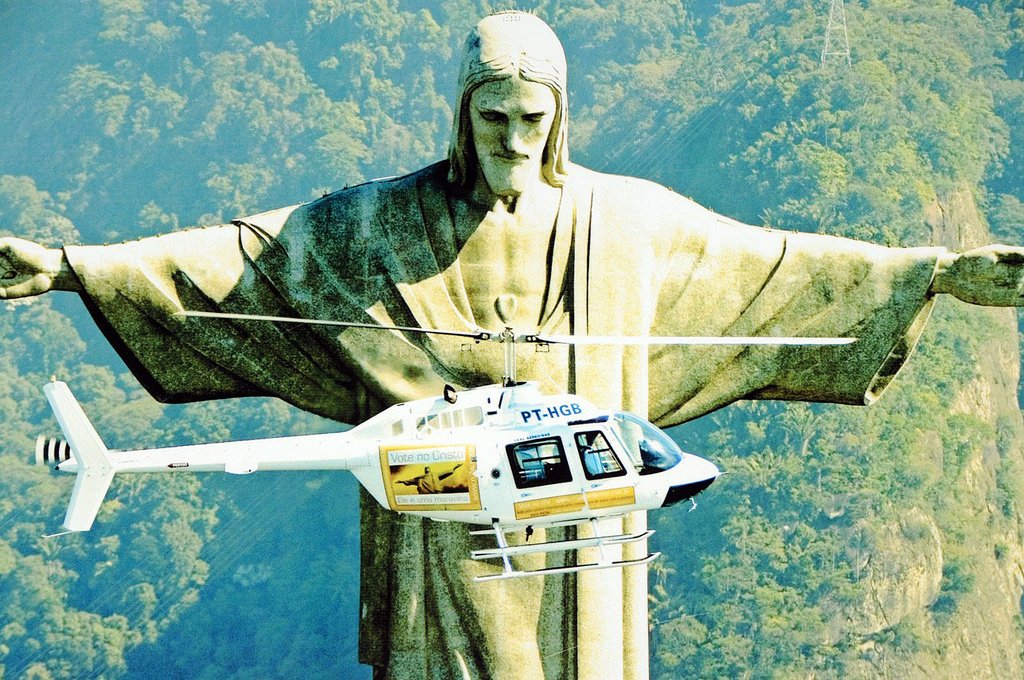
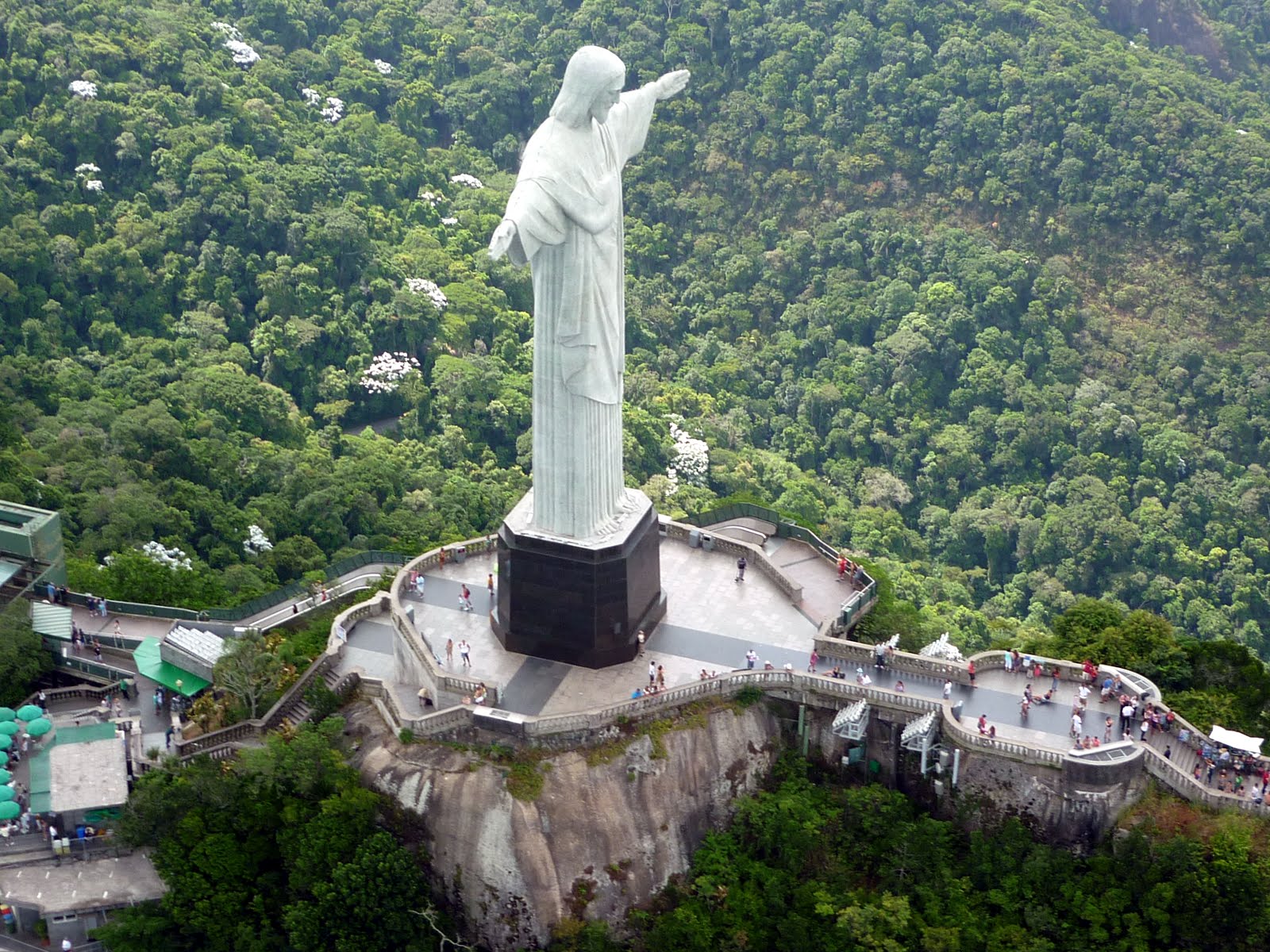

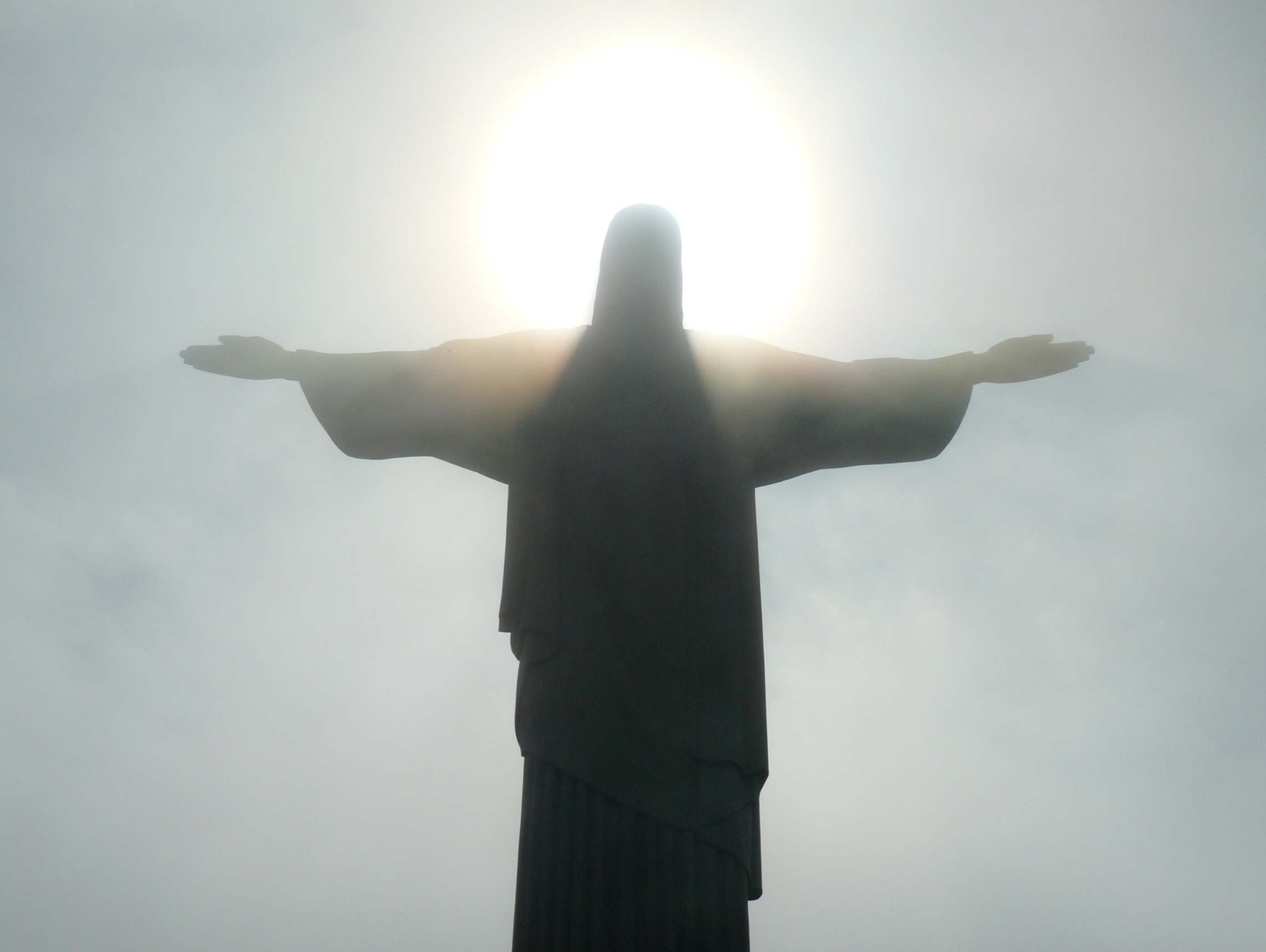
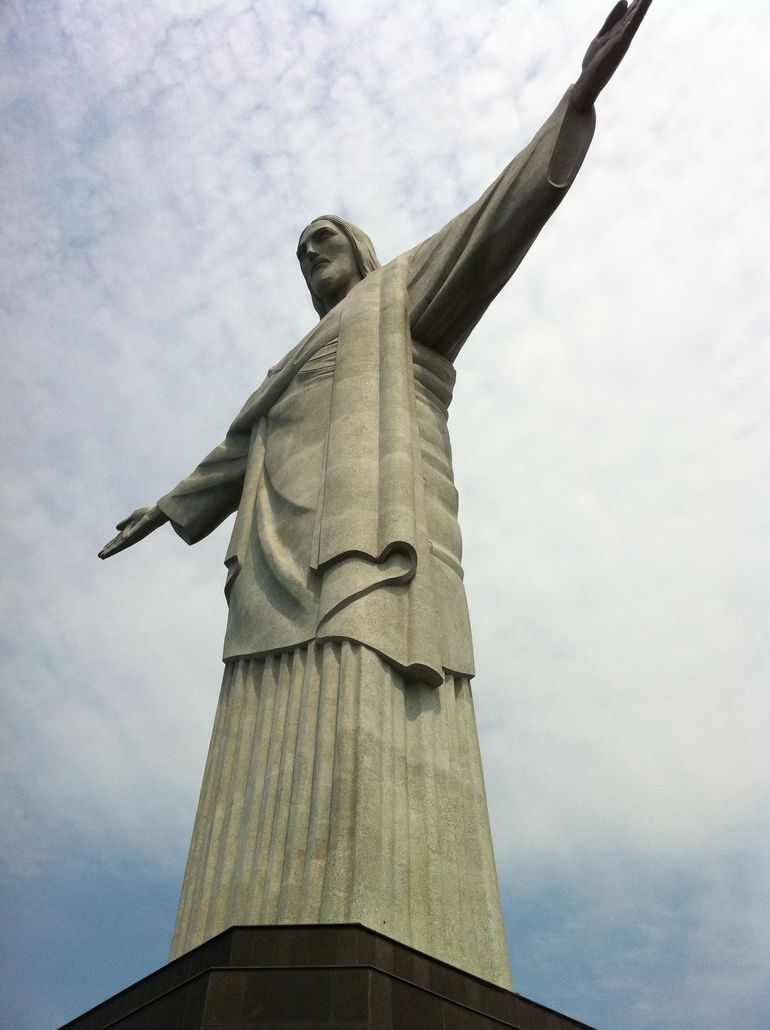

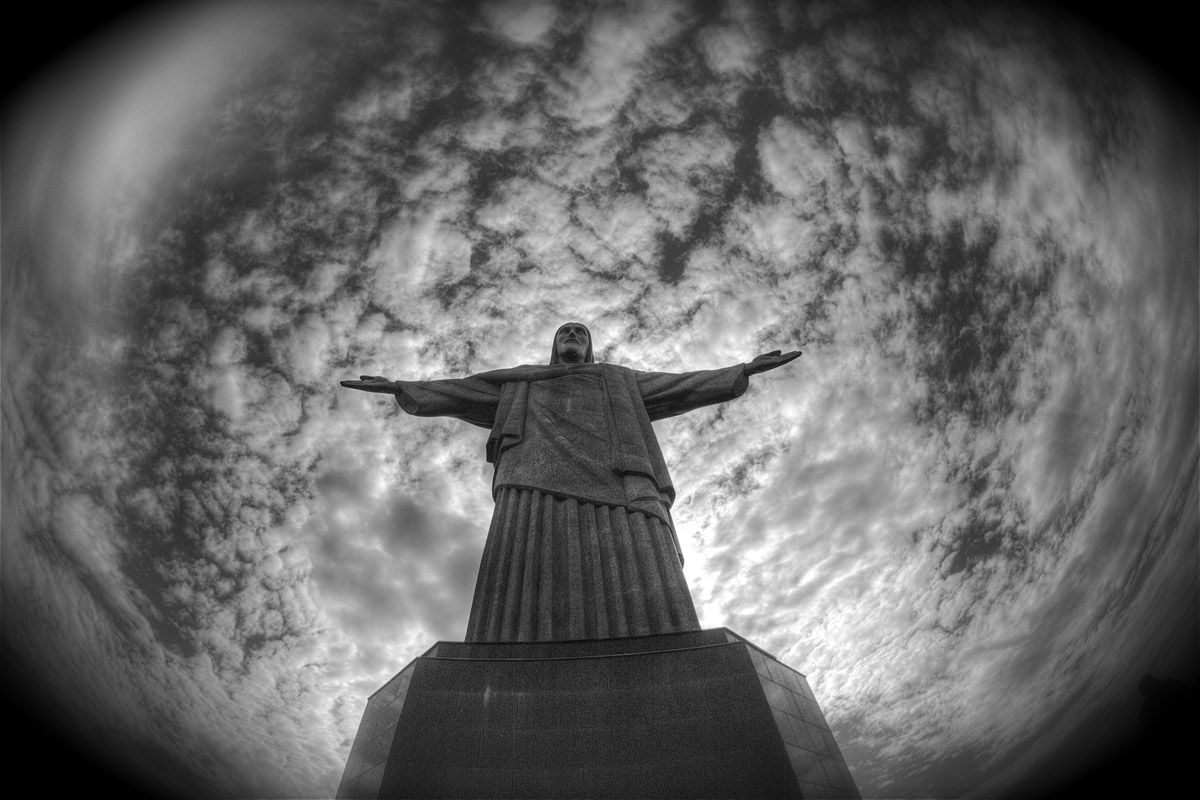
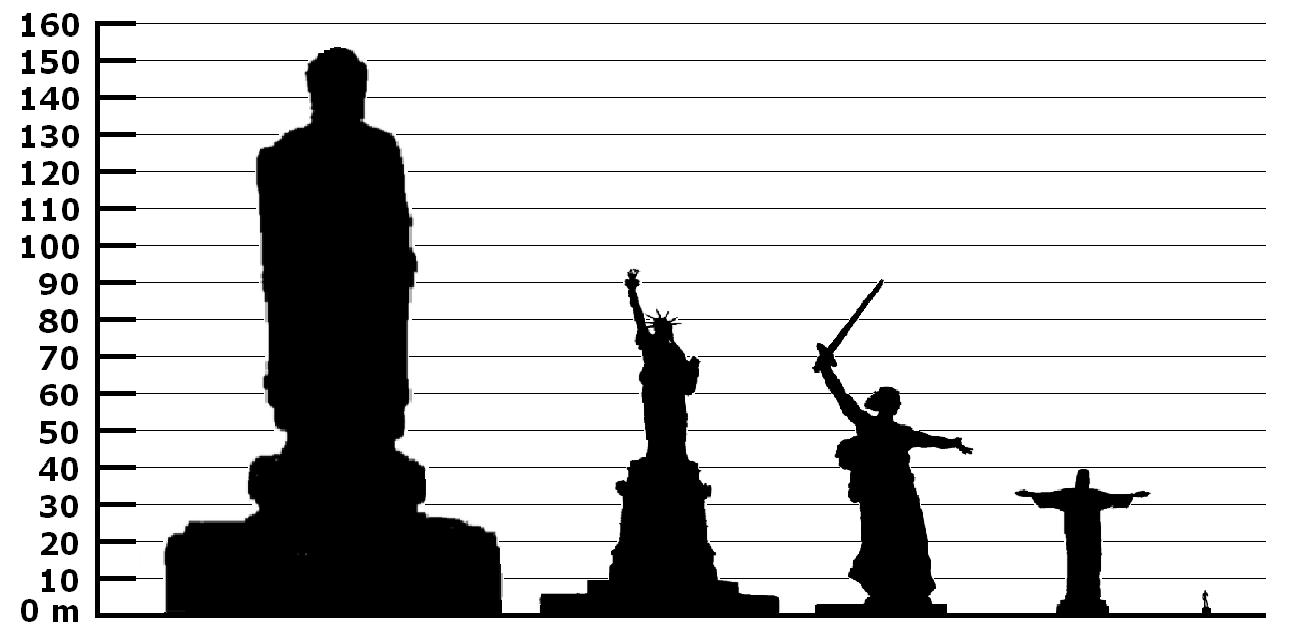
About the biggest statue I
sources
http://www.airpano.ru
http://ria.ru/spravka
http://geographyofrussia.ru
http://grandstroy.blogspot.ru/
Look at which ones we've already examined. The original article is on the website InfoGlaz.rf Link to the article from which this copy was made -
At the top of Mount Corcovado there is a statue of Jesus Christ, the correct name of which is Statue of Christ the Redeemer. A huge 38-meter statue towers over Rio de Janeiro. This statue is a symbol of the city, a unique business card Brazil. Every year millions of tourists from all over the world come here to see the huge statue of Christ with outstretched arms, as if trying to embrace the whole world in his arms. Mention of the mountain on which the statue stands can be found in the Bible; in ancient times it was called the “Mountain of Temptation.” Later, in the Middle Ages, she began to be called Corcovado, which translates as hunchback. This name is associated with the amazing shape of the mountain, which in its outline resembles a hump.
The idea to create a statue of Jesus Christ on Mount Corcovado belongs to Pedro Maria Bossu in 1859. He was a Catholic clergyman. Struck by the magnificent majestic view of the mountain, he decided to approach the daughter of the Emperor of Brazil, Princess Isabella, with his project, so that they would finance this project. However, this plan of Father Pedro was not destined to come true, because the state did not have sufficient funds to erect such a grandiose monument. It was decided to postpone construction of the statue until 1889. However, soon there was a change in the form of government, as a result the church was separated from the state and the clergy could not count on state funding for this project. 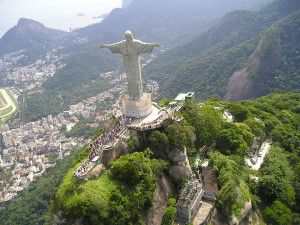 Only in 1921 did they again remember the idea of erecting a statue of Christ on Mount Corcovado. This happened a year before Brazil celebrated its independence. The initiators were Catholic organizations of the city; it was decided to erect a grandiose statue of Christ, which can be seen anywhere in the city. The statue was supposed to symbolize not only the victory of Christianity, but also become a symbol of the independence and revival of the country. The publication ''O Cruzeiro'' announced a collection of donations for the construction of the monument, and activists spent a week collecting funds. As a result of “Monument Week,” more than two million flights were collected. A lot of funds were allocated by the church. This monument is deservedly considered a people's project; Brazilians are rightfully proud of it.
Only in 1921 did they again remember the idea of erecting a statue of Christ on Mount Corcovado. This happened a year before Brazil celebrated its independence. The initiators were Catholic organizations of the city; it was decided to erect a grandiose statue of Christ, which can be seen anywhere in the city. The statue was supposed to symbolize not only the victory of Christianity, but also become a symbol of the independence and revival of the country. The publication ''O Cruzeiro'' announced a collection of donations for the construction of the monument, and activists spent a week collecting funds. As a result of “Monument Week,” more than two million flights were collected. A lot of funds were allocated by the church. This monument is deservedly considered a people's project; Brazilians are rightfully proud of it. 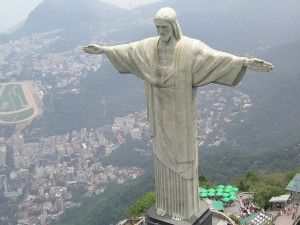 The beginning of the creation of the statue is considered to be April 22, 1921. Several designs for the statue were proposed, and engineer Heitor da Silva Costa won. According to his plan, the sculpture depicts Christ with his arms spread to the sides, as if he were hugging the whole world. The gesture, like a cross, expresses both pride and compassion, its meaning is contained in the phrase: “All that exists is in the hands of the Lord.” It was customary to make the frame of the monument from reinforced concrete, and the outer layer of the monument was made from soapstone, which was imported from Sweden. This stone, due to its strength, was most suitable for the construction of this colossal monument. The image of Christ the Redeemer was completed by the artist Carlos Oswald, all the necessary calculations for the installation of the monument were carried out by Costa Hissses, as well as Heitor Levi and Pedro Viana. Foreigners also took an active part in the construction of the monument. Thus, the sculptor Paul Landowski modeled and made the head and hands of Christ in France.
The beginning of the creation of the statue is considered to be April 22, 1921. Several designs for the statue were proposed, and engineer Heitor da Silva Costa won. According to his plan, the sculpture depicts Christ with his arms spread to the sides, as if he were hugging the whole world. The gesture, like a cross, expresses both pride and compassion, its meaning is contained in the phrase: “All that exists is in the hands of the Lord.” It was customary to make the frame of the monument from reinforced concrete, and the outer layer of the monument was made from soapstone, which was imported from Sweden. This stone, due to its strength, was most suitable for the construction of this colossal monument. The image of Christ the Redeemer was completed by the artist Carlos Oswald, all the necessary calculations for the installation of the monument were carried out by Costa Hissses, as well as Heitor Levi and Pedro Viana. Foreigners also took an active part in the construction of the monument. Thus, the sculptor Paul Landowski modeled and made the head and hands of Christ in France. 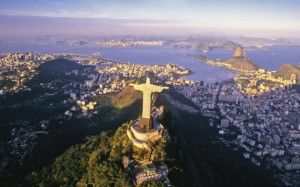 The construction of the monument took nine years and the grand opening took place in October 1931. The size and complexity of execution amazed everyone present; for a long time this majestic statue had no equal in scale in the whole world. The height of the statue is 38 meters, and the pedestal is 8 meters. The weight of the structure, including the base, is 1145 tons, and the arm span of the statue reaches 30 meters. A staircase of 220 steps leads to the foot of the statue. The figure of Christ the Redeemer in the evening presents a fantastic spectacle. The figure of Christ, illuminated by pillars of light, seems to be descending into the city, tired from the bustle of the day and falling asleep.
The construction of the monument took nine years and the grand opening took place in October 1931. The size and complexity of execution amazed everyone present; for a long time this majestic statue had no equal in scale in the whole world. The height of the statue is 38 meters, and the pedestal is 8 meters. The weight of the structure, including the base, is 1145 tons, and the arm span of the statue reaches 30 meters. A staircase of 220 steps leads to the foot of the statue. The figure of Christ the Redeemer in the evening presents a fantastic spectacle. The figure of Christ, illuminated by pillars of light, seems to be descending into the city, tired from the bustle of the day and falling asleep.
It should be noted that the severe storm that swept through the city in July 2008 and brought widespread destruction to the city did not affect the statue of Christ. Scientists explain this by the dielectric properties of soapstone, which extinguished lightning strikes. Believers give this fact a different meaning.
Every year, thousands of tourists and pilgrims visit Rio de Janeiro to admire the beauty and grandeur of the statue. The statue of Christ the Redeemer is included in the world list cultural heritage UNESCO. She was included in the number New Wonders of the World July 7, 2007.
Rio de Janeiro, day two.
Today the impression of Rio has noticeably improved - apparently, Rio belongs to that rare species cities that have an absolutely faded and nondescript center and all the beauties and attractions in them are scattered on the outskirts - in this Rio is partly similar to Los Angeles. So, from my hostel, located near the Praca Onze metro station, I got to the Cosme Velho railway station, from where trains go to Mount Corcovado, with two transfers - two buses and a metro. Upon arrival, it turned out that there were no train tickets for the next two and a half hours - it was a full house, everything was sold out. I really didn’t want to climb the mountain on foot, and on my own Railway is a landmark: the height difference is 690 meters, in one place it passes over a bridge 170 meters long; so, while waiting for the train, I had to wander around the Laranjeiras area, choose souvenirs and drink coffee in cafes. Every cloud has a silver lining - during this time I bought all the planned Brazilian souvenirs and gifts. And just sitting for an hour in a cafe under a palm tree, leisurely sipping coffee and finally realizing that you are not just anywhere, but in Rio de Janeiro - this is worth a lot.
Laranjeiras area(Laranjeiras) is a fairly prosperous area of Rio. The official residence of the governor of the state of Rio de Janeiro (in the Laranjeiras Palace) and the city hall (in the Guanabara Palace) are located here. Surroundings of Cosme Velho station: 

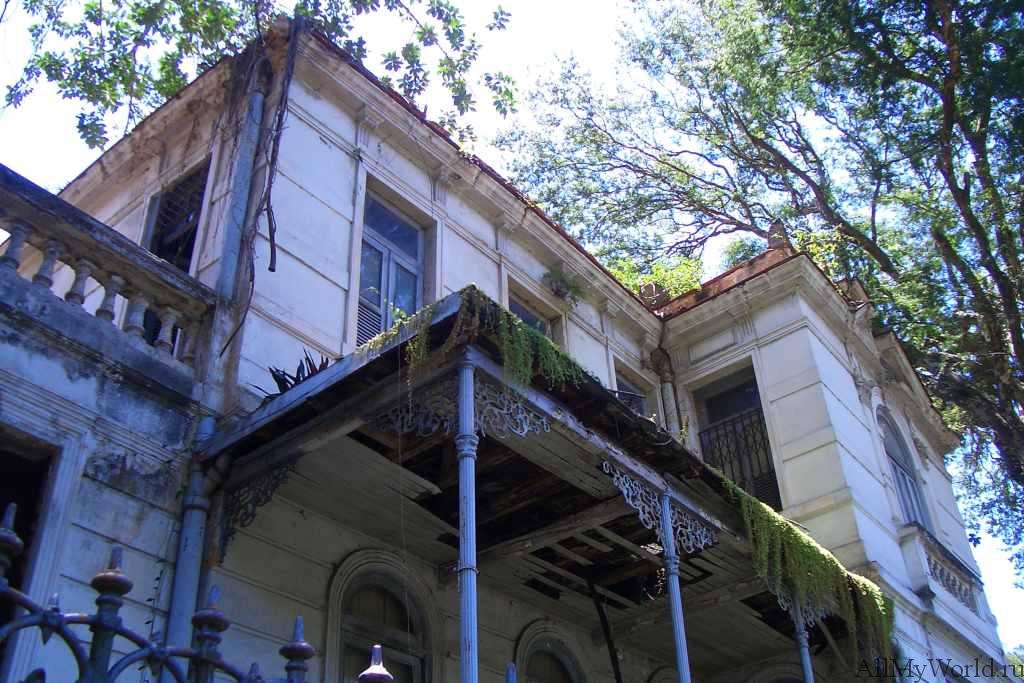
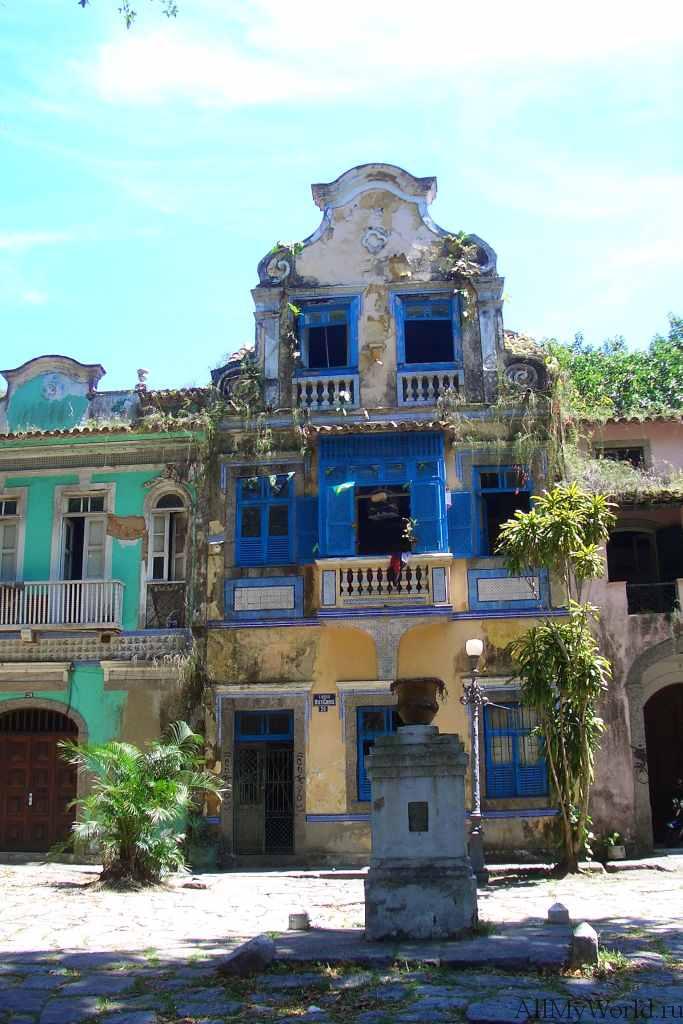
Mount Corcovado: in 1501, after discovering Guanabara Bay, Amerigo Vespucci named the hill overlooking the coast Pinaculo Da Tentação (“Peak of Temptation”) after the example of the biblical mountain near the city of Jericho, where Jesus spent forty days in fasting and was tempted by the devil. Modern name Corcovado (“hillock”, “hump”) appeared already in the 17th century; one version says that the name supposedly comes from the Latin cor quo vado? (“heart, where am I going?”).
Statue of Christ the Redeemer: The idea of building a religious monument on the top of the mountain arose in 1859, when the Catholic priest Pedro Maria Boss proposed the project for consideration by Princess Regent Isabel, daughter of Emperor Don Pedro II of Brazil - but then followed the proclamation of the republic and other turbulent historical events, so all interested people no longer cared about the monument. The idea was returned to again on the eve of the centenary of Brazilian independence, in the 1920s. Construction began on April 4, 1922; According to the original design, Jesus held a cross in his left hand and a globe in his right. However, even before the completion of construction, local residents got into the habit of depicting a globe instead of the globe in numerous cartoons. soccer ball, and the idea with a cross and a ball had to be abandoned. Grand opening Christ the Redeemer statues(Cristo Redentor) took place on October 12, 1931; in 1937, the statue was officially recognized as a monument under state protection; in 2006, the Catholic Church declared it a place of pilgrimage, and a year later, in a vote by SMS, telephone and Internet, it was recognized as one of the “seven wonders of the world of the New Age.” 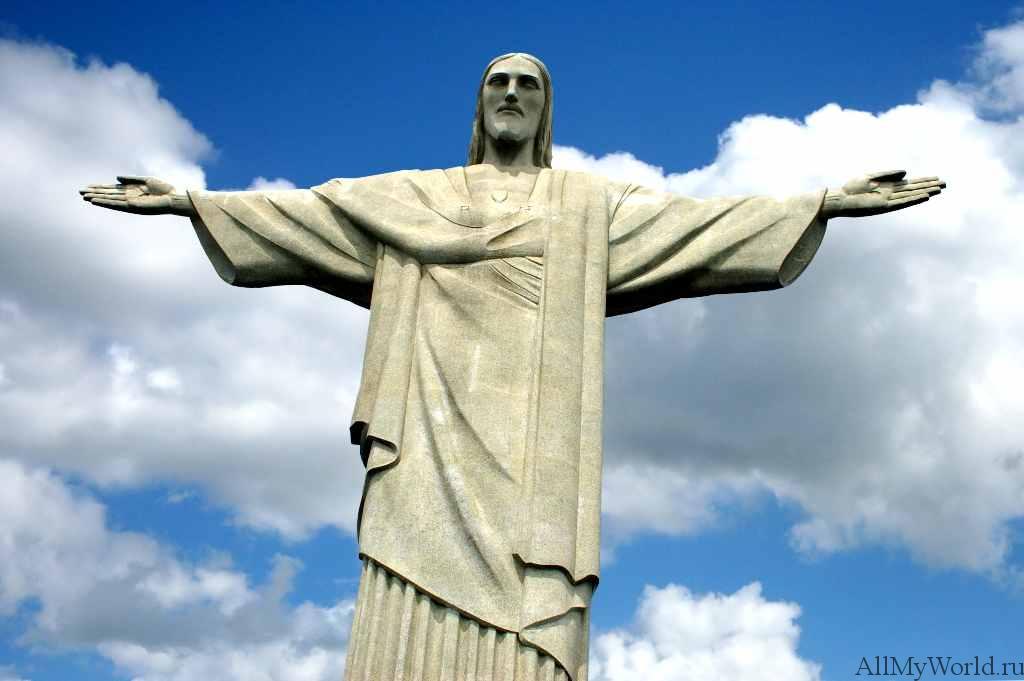


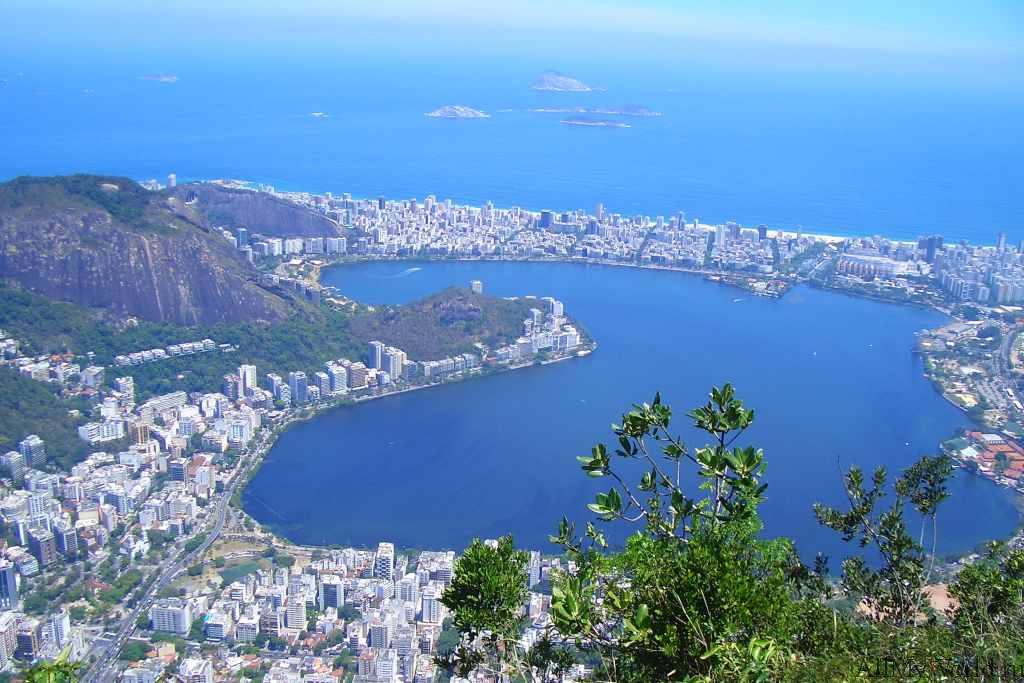
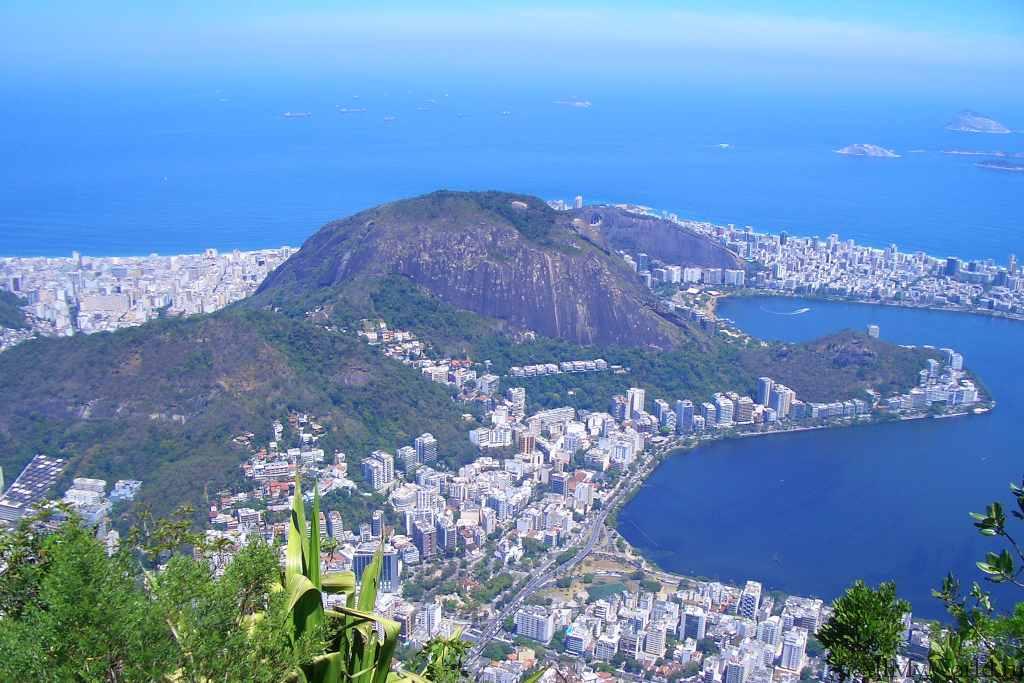
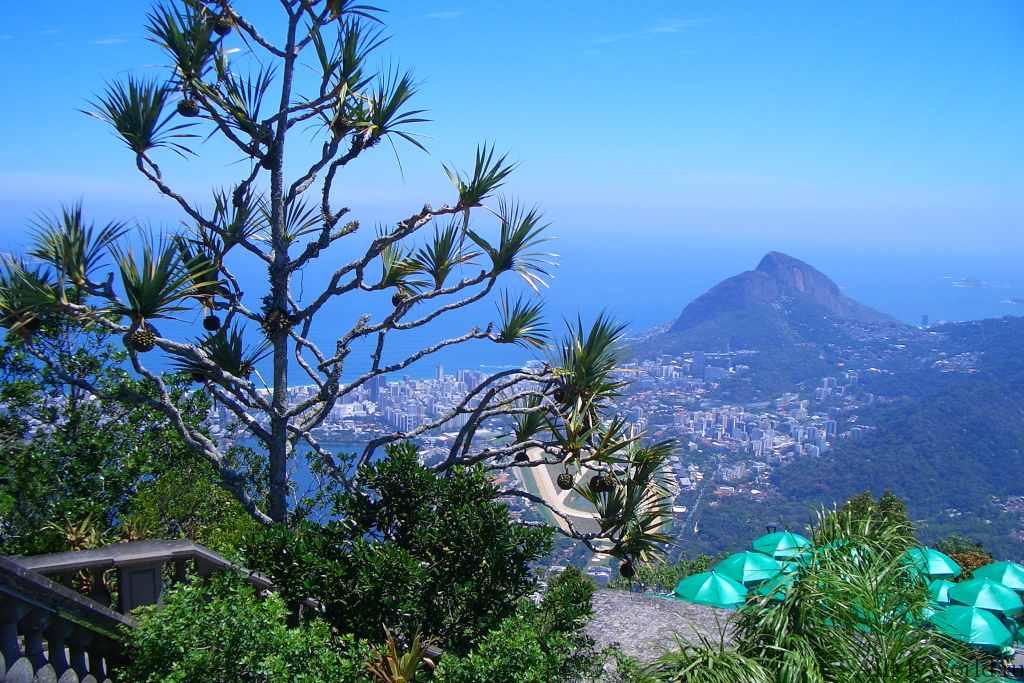 The statue is really nice and the views from the mountain are amazing - all wonderful, but being the world famous "emblem" of Rio, the statue attracts crazy crowds of tourists. And many of them strive to stand exactly in front of the statue, spread their arms out to the sides and stand like that while their friends take pictures of them in the “statue pose” against the background of the original - you have to carefully bend around these “statues” in the crowd, trying not to touch their outstretched limbs.
The statue is really nice and the views from the mountain are amazing - all wonderful, but being the world famous "emblem" of Rio, the statue attracts crazy crowds of tourists. And many of them strive to stand exactly in front of the statue, spread their arms out to the sides and stand like that while their friends take pictures of them in the “statue pose” against the background of the original - you have to carefully bend around these “statues” in the crowd, trying not to touch their outstretched limbs. 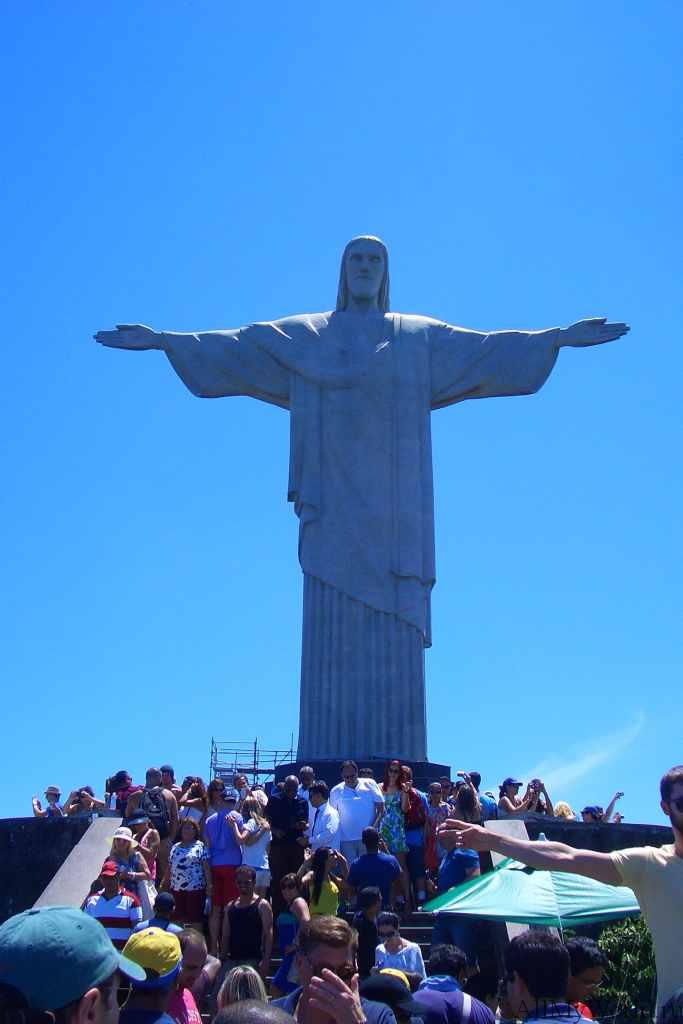 And one Russian-speaking comrade climbed onto the parapet, raised his hands to the sky and let his companion yell from there exactly how to photograph him.
And one Russian-speaking comrade climbed onto the parapet, raised his hands to the sky and let his companion yell from there exactly how to photograph him.
At the examination room, such an episode happened - someone once again screamed heart-rendingly in my ear - and out of surprise, I cursed loudly out loud in Russian. Suddenly I hear: “Are you from Russia? Hello!" It turned out that the seller of the souvenir stall, a long-time immigrant from Ukraine, heard the Russian obscenity and was so happy about it that we began a friendly conversation, during which he even gave me a piece of agate from his assortment for luck. So now I have an agate from Mount Corcovado. So, it took me about five hours to visit the statue of Christ - I recommend leaving plenty of time and going there as early as possible so as not to wait for the train like I did. By the way, at 11 am tickets were sold only for the train departing at 13:30, and at 13:00 - only for the 16:00 train; so, having arrived at the station for lunch, it is quite possible to make it to the top only by sunset. And all this was in early November, that is, not yet at the height of the tourist season.
Main attraction Urca district(Urca) is, of course, Sugarloaf Mountain(Pao de Azucar). The rock rising in Guanabara Bay, along with the statue of Christ the Redeemer, is the second most popular postcard subject of Rio. Lower station cable car located on Pasteur Avenue (Avenida Pasteur, 520), from where the carriages first go to the intermediate station on the Morro da Urca hill (217 m), and from there to the top of Sugar Loaf (395 m). 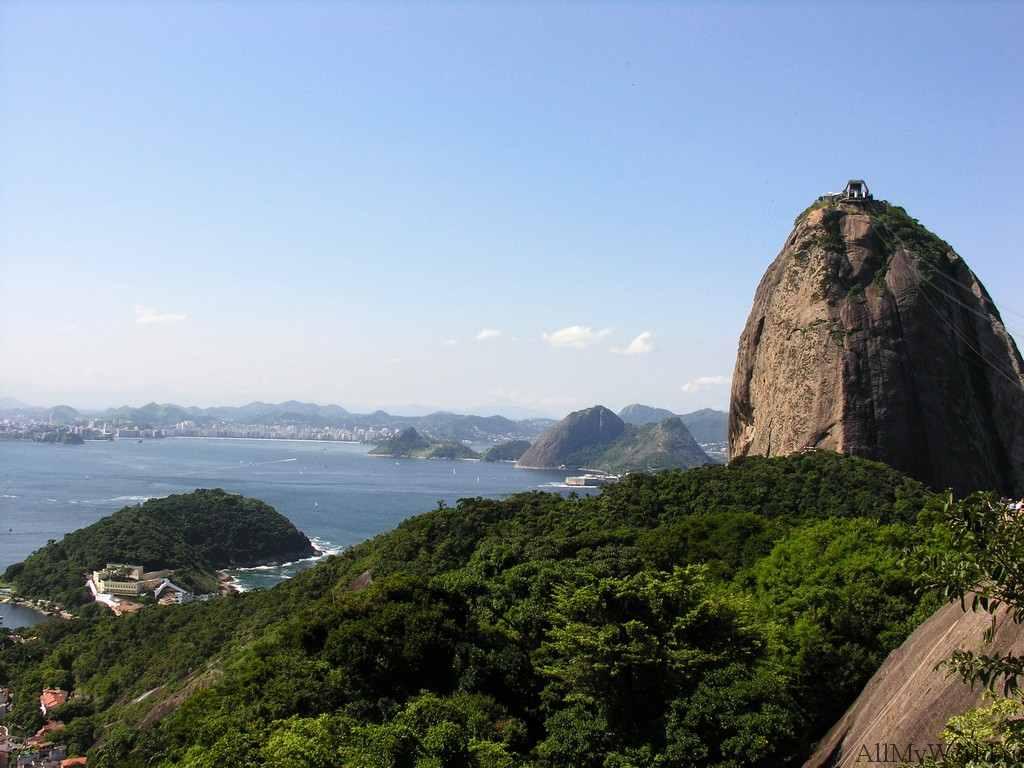
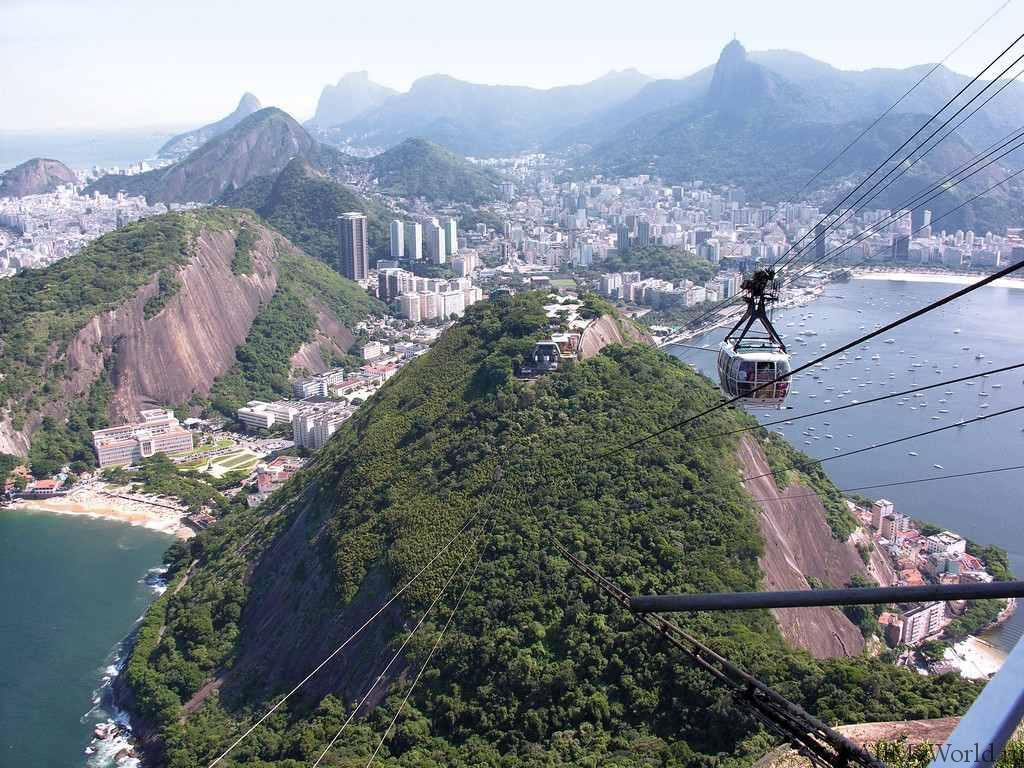
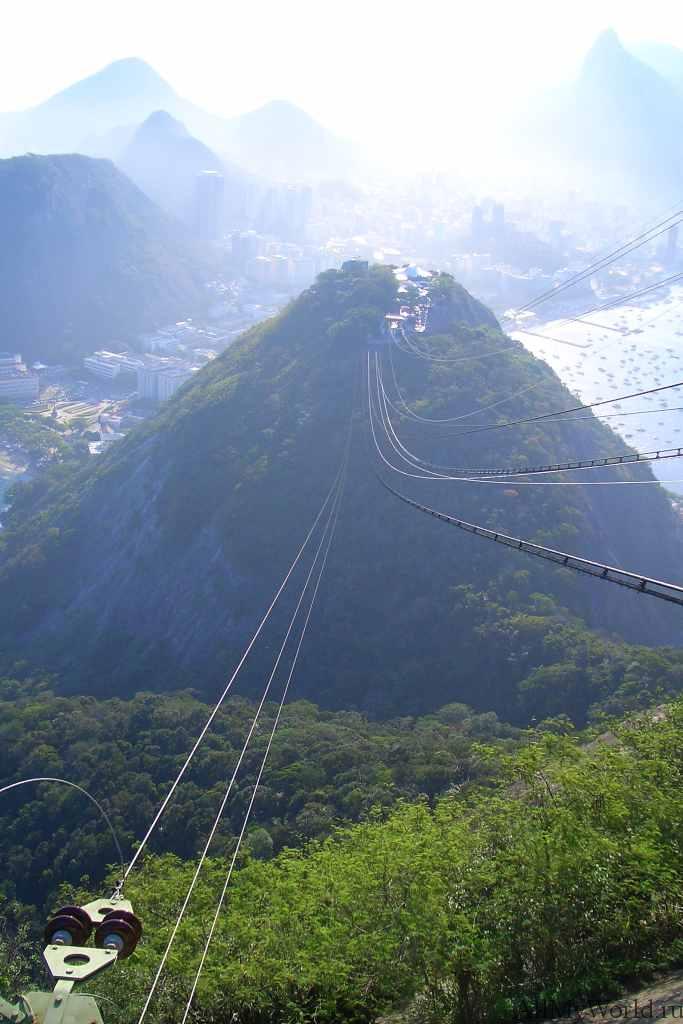
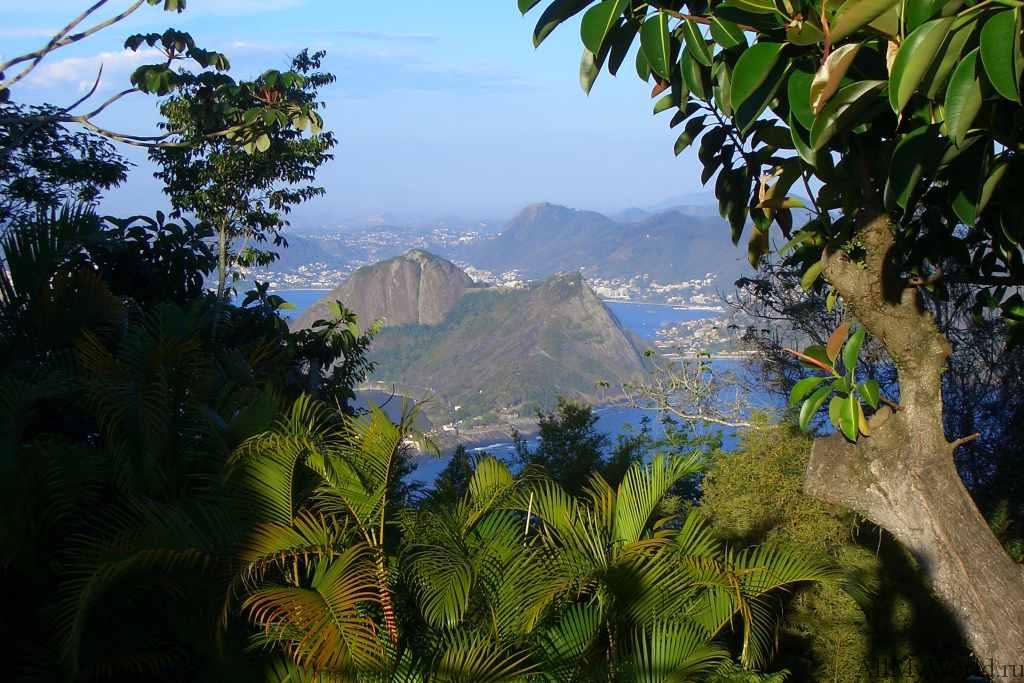
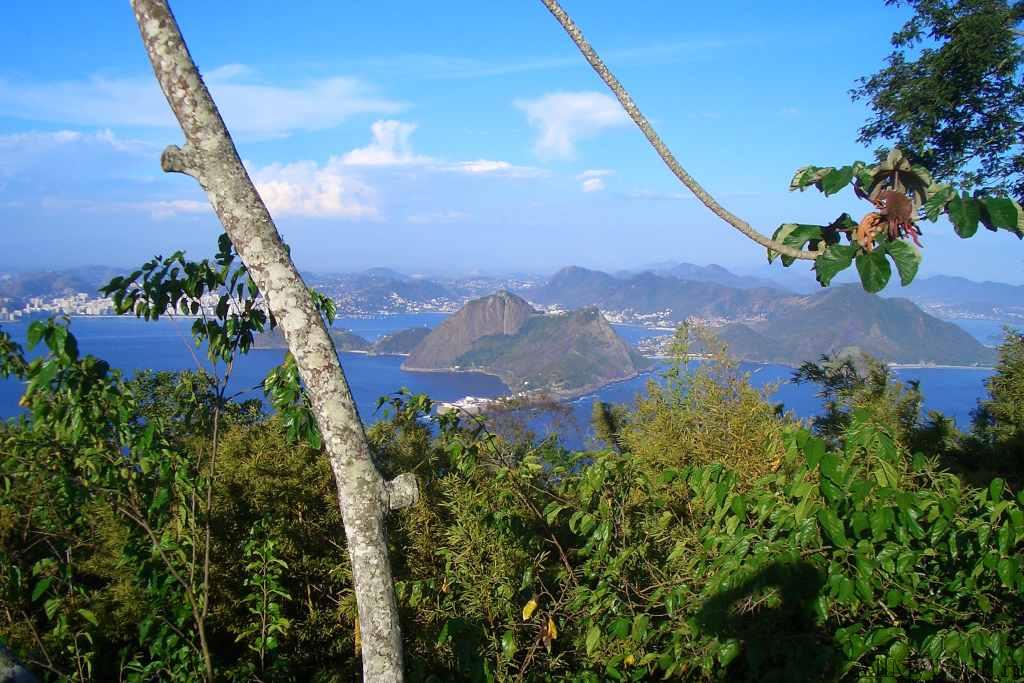
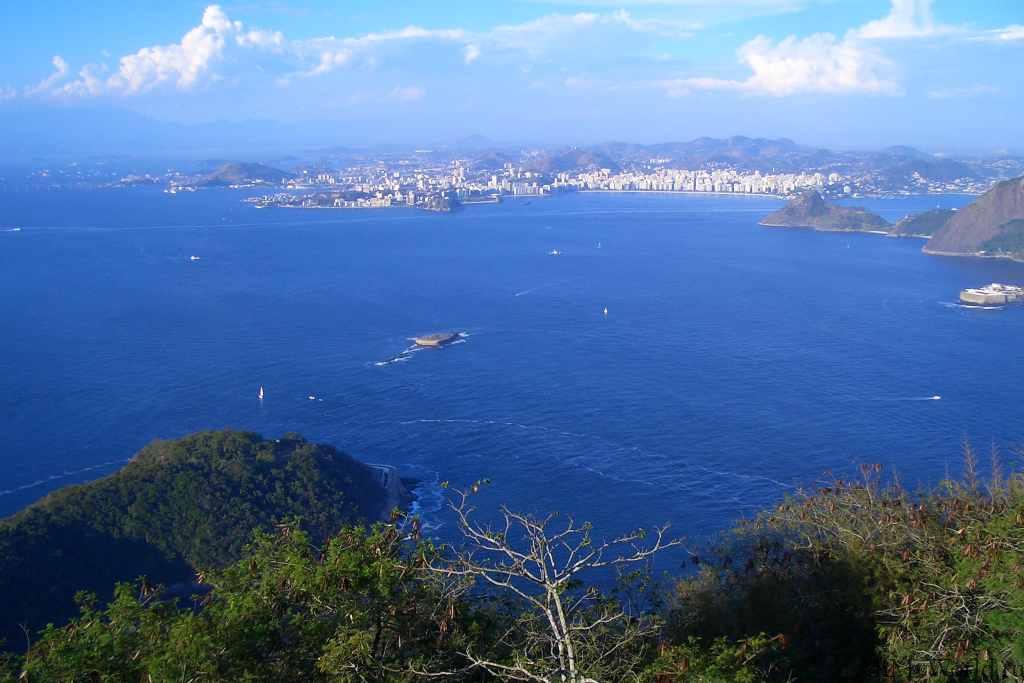 Having reached the top, I decided to wait for sunset and look at the sunset and night Rio - judging by the reviews, it is best to do this from Sugar Loaf. Looking from the top of Sugar Loaf at the panorama of the evening Rio, you begin to understand why this city is considered one of the great cities of the world. There is something mesmerizing in this spectacle - the hills in the evening haze, and the ocean rolling onto the city beaches and even the favelas climbing up the hillsides.
Having reached the top, I decided to wait for sunset and look at the sunset and night Rio - judging by the reviews, it is best to do this from Sugar Loaf. Looking from the top of Sugar Loaf at the panorama of the evening Rio, you begin to understand why this city is considered one of the great cities of the world. There is something mesmerizing in this spectacle - the hills in the evening haze, and the ocean rolling onto the city beaches and even the favelas climbing up the hillsides. 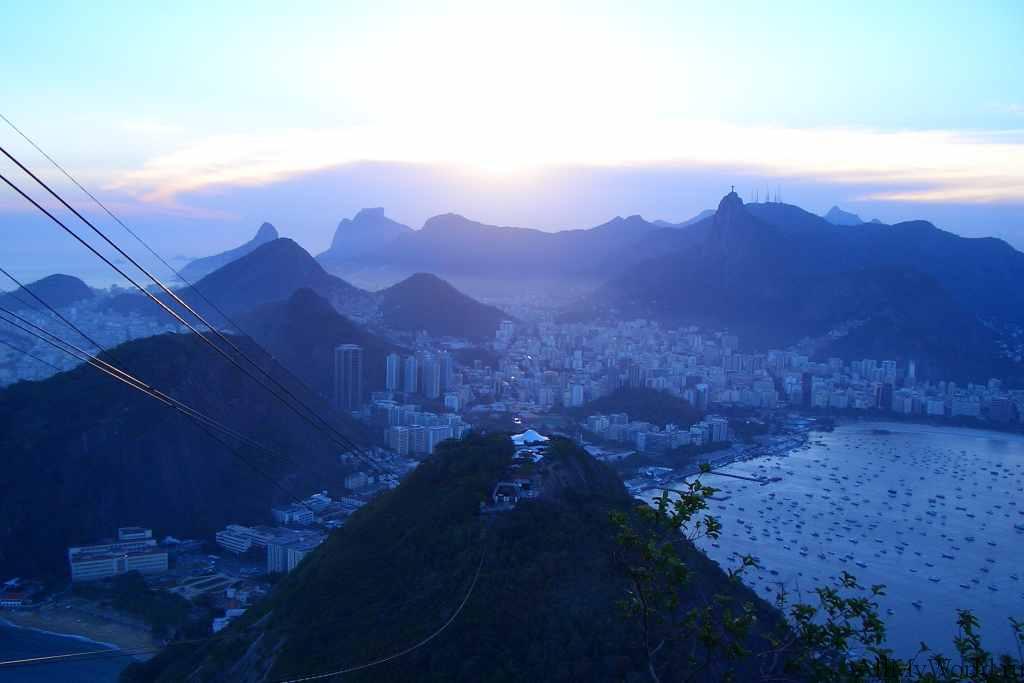 By the way, about greatness: Rio managed to be not only the capital of Brazil (when the capital of the Viceroyalty of Brazil was moved here from El Salvador), but even the capital of the entire Portuguese colonial empire - when in 1808, fleeing Napoleon, the Prince Regent of Portugal fled to Brazil Don Juan VI is together throughout his court.
By the way, about greatness: Rio managed to be not only the capital of Brazil (when the capital of the Viceroyalty of Brazil was moved here from El Salvador), but even the capital of the entire Portuguese colonial empire - when in 1808, fleeing Napoleon, the Prince Regent of Portugal fled to Brazil Don Juan VI is together throughout his court.
How to get to the Christ the Redeemer statue on Mount Corcovado: first take buses 180, 405, 422, 497, 498, 569, 570, 580, 583, 584 to railway station Cosme Velho, then take the train to the top station of Cristo Redentor; The price of a train ticket to Mount Corcovado is 50 reais round-trip.
How to get to the top of Sugarloaf Mountain: The lower station of the cable car is located on Avenida Pasteur, 520. The price of a ticket for both cable cars (to the Morro da Urca station and then to Sugar Loaf) is 62 reais round-trip. Theoretically, you can skip the first cable car and walk to the transfer station, enjoying the views and merging with nature - but this will not affect the ticket price, and it’s a high climb there.
The most famous and majestic statue in Rio de Janeiro - the figure of Christ the Redeemer, which adorns the top of the South American mountain Corcovado.
This is Brazil's largest statue of Christ: he spreads his arms over the bustling metropolis in a gesture of blessing. The building has long attracted tourists from all over the world - tours to Corcovado are popular due to visiting observation platforms, as well as beautiful views of the city of ten million, cozy bays and coves, clubs and Ipanema beach, the grandiose famous stadium Maracana. The monument was erected in the center National Park Tijuca.
Christ statue in Rio: history
In 1921, the country was preparing to celebrate the approaching centenary of Brazilian independence. By this date, it was decided to build a monument to Christ the Redeemer on Corcovado. The city authorities announced a competition for the best design of the monument, and fundraising began immediately.

- More than 2.2 million reais were raised for the construction of a statue of Christ in Brazil. Conducted active work to finance the project Catholic Church. The city's Archbishop Sebastian Leme supervised the construction of the architectural masterpiece.
- The initial version of the monument was a sketch by the talented artist Carlos Oswald, who proposed to depict the Savior with his hands open in a blessing gesture. The statue in Brazil would become a unique symbol of the Christian faith and would look like a huge cross. They planned to install the reinforced concrete Jesus on a pedestal made in the shape of a globe. Brazilian engineer da Silva Costa developed the final design for the national monument.
- During construction, soapstone was used, thanks to which the statue was well strengthened, giving its surface a special aesthetics.
- The country's technologies did not provide for the presence of workshops of such a scale, so to implement the project, it was decided to create the masterpiece in parts in France. In the mid-20s, the French sculptor Landowski modeled the head of the future statue, which was about 4 meters high. Next we started making the hands. Gradually, all the parts were made of hard and pliable stone, but they needed careful transportation to the mountain.
- The statue in Rio de Janeiro was delivered to Brazil in disassembled form and lifted up along a small railway built specifically for this purpose. The Karakol path was laid from the tracks - workers raised the parts of the monument up 220 steps.
- It took nine years to build this grandiose statue in Rio de Janeiro. The finished height of the structure was 38 meters, of which more than 30 meters are devoted directly to the figure of Christ. The statue weighs 635 tons, while the span of its arms reached 28 meters. It was decided to install Jesus on a picturesque natural hill 700 meters high.
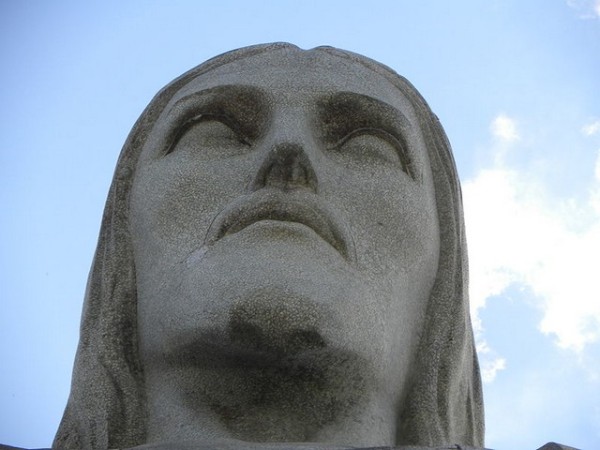
On a solemn date in October 1931, authorities and citizens opened and consecrated this new symbol of Rio.

Design Features
The most beautiful statue in Brazil, due to its majestic size and favorable landscape, is clearly visible even at a great distance. You can admire the real splendor in the evening - the statue is illuminated by a whole system of huge spotlights.
Inside this statue of Christ, famous outside of Brazil, a chapel was opened, located in the basement. Now the chapel has become a place of pilgrimage for wedding processions. Tourists eagerly come here, who, in addition to impressions, try to take with them miniature stone models of the statue from the local souvenir shop.
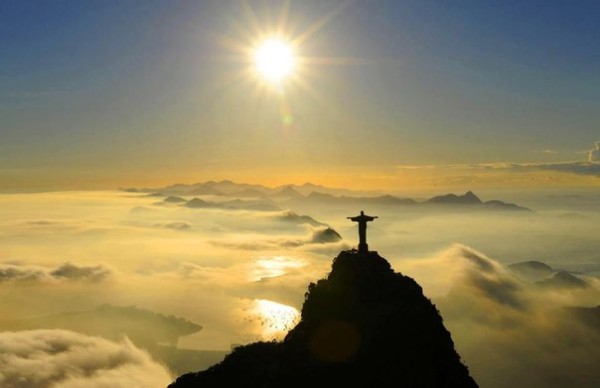
The arms of Christ are wide open in the embrace: the gesture symbolizes sincere and all-forgiving love for people. Locals believe that Jesus embraces everyone who comes to him. In 2007, the statue was elected one of the new wonders of the world.
The observation deck is located at the feet of the statue: you can go up there by escalator, highway or steps. The site offers magical panoramas of Rio and the surrounding area.
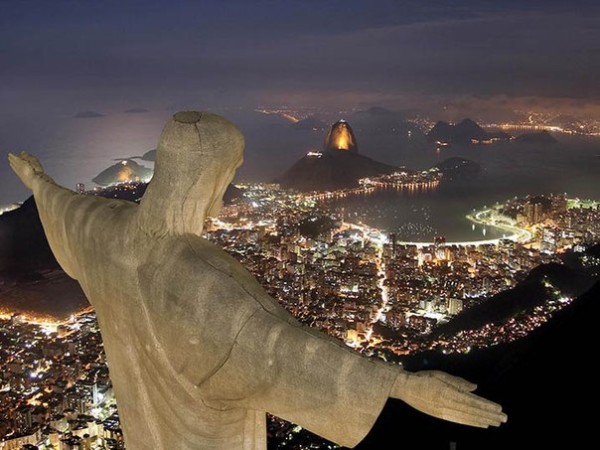
The monument has already undergone preventive and major repairs several times. In 2008, the statue was struck by lightning and was slightly damaged: restoration work lasted two years. The craftsmen managed to renew the outer layer of the stone, repair the fingers and head of the statue, and install new lightning rods. In the same year, the monument was subjected to an unexpected act of vandalism - having climbed the scaffolding left by the workers, the attackers left inscriptions and drawings on the face of Christ.
Every year the statue undergoes mandatory condition monitoring and inspection; work is underway to prevent corrosion and improve the protection of the monument.
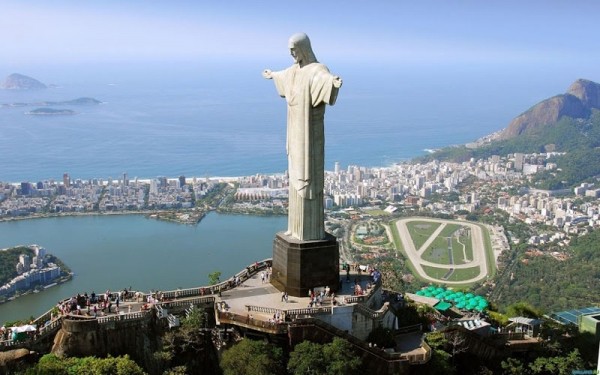
To see this grandiose statue in Brazil with your own eyes, you should go on a trip to the South American continent. Specialists will be able to offer many options for visiting this country on the most reasonable terms and at reasonable prices!
One of the most famous statues in the world and certainly the most recognizable in Brazil is the statue of Christ the Redeemer. Installed on Mount Corcovado at an altitude of more than 700 meters, it with outstretched arms looks at him in a blessing gesture large city, located under it. The Christ statue in Rio de Janeiro, due to its fame, attracts millions of tourists to Mount Corcovado. From its height there is a beautiful view of the city of ten million with its bays, beaches, and the Maracana stadium.
Statue of Christ in Rio: history and description
In 1884, a small railway was built to the mountain, along which construction materials were delivered later. The reason for the construction of the Christ monument was the approaching anniversary of the centenary of Brazilian independence in 1922. A fundraiser was announced to create a monument in what was then the capital of Brazil. For example, the magazine O Cruzeiro collected about 2.2 million reais from its subscription. The church, represented by Archbishop Sebastian Leme, also actively participated in the preparation of the financial fund.
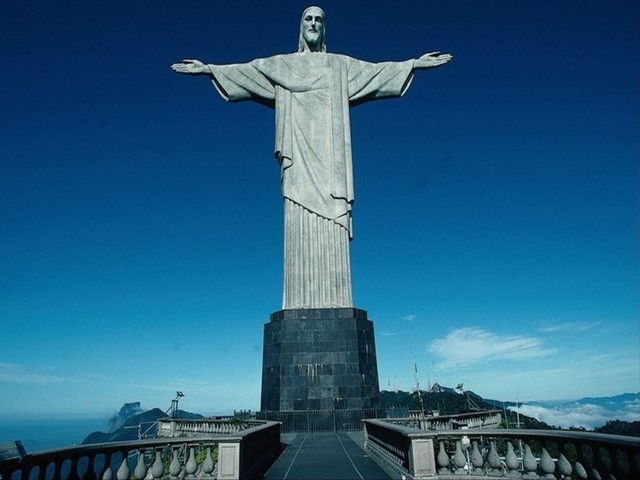
The idea of Christ with outstretched arms, resembling a cross from a distance, belongs to the artist Carlos Osvaldo. According to this first model, the statue of Christ was supposed to stand on the globe. The final design, according to which the sculpture was created, was created by Heitor da Silva Costa. According to it, the height of the structure is 38 meters, of which 8 meters goes to the pedestal, and the arm span reaches 28 meters. With such amazing dimensions, the total weight of the structure was 1145 tons.
